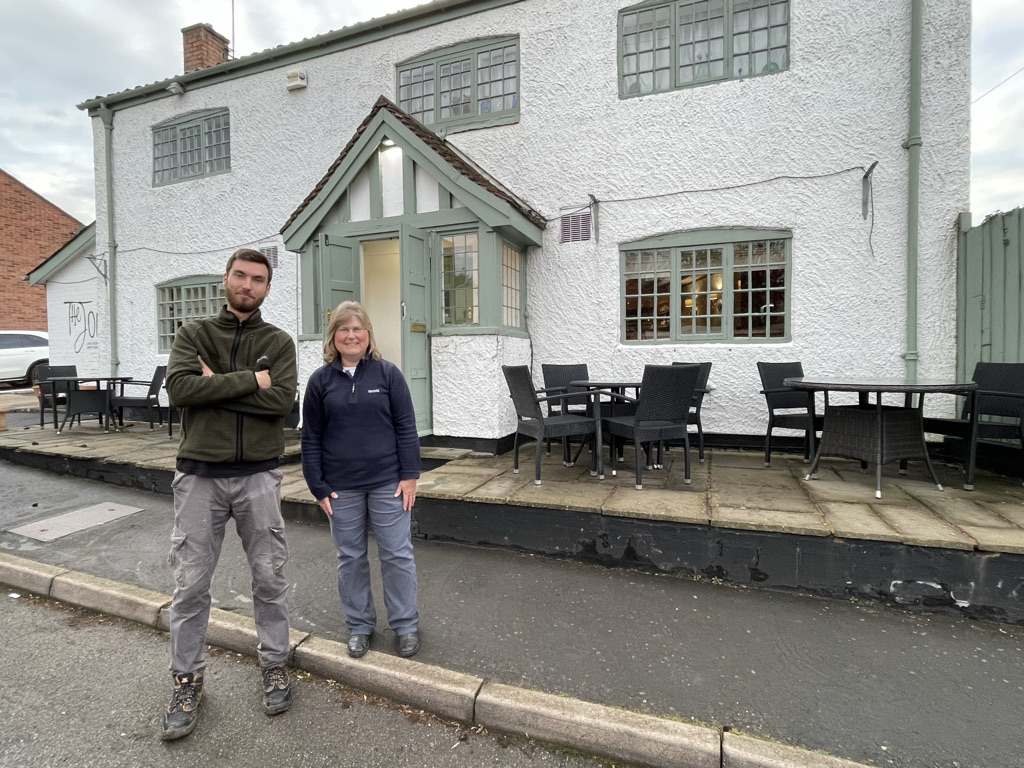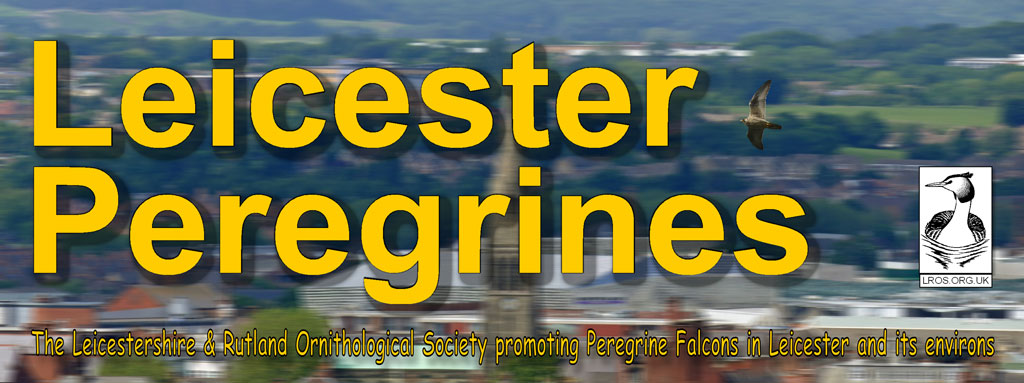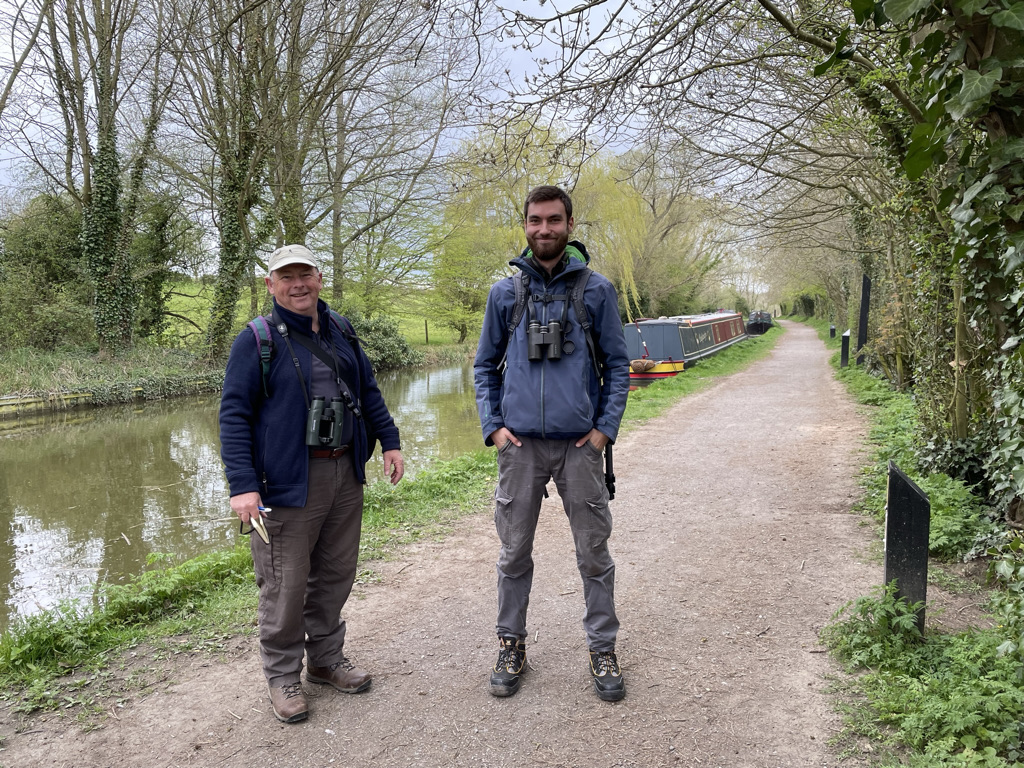Birding the Leicestershire Round
Section 6: Foxton to Bruntingthorpe – Wednesday 13th April 2022
Participants: Jim, Sue and Josh
Picking up our route again from where we left off at the Blackhorse Pub in Foxton, we were full of anticipation for this section of the Round. The northerly wind which had thus far featured strongly on our journey had finally given way to a more pleasant southerly breeze. We were hopeful of discovering a few migrant species previously held up by the weather and it wasn’t long before we heard the uplifting chatter of our first Swallows, having moved less than two paces from the car! Wheezing Greenfinch and chirruping House Sparrow blended with the songs of Goldfinch, Chiffchaff, Goldcrest, Robin and Dunnock in the village. While we paused here an odd call, reminiscent of a Buzzard projecting from a nearby tree caught our attention. The originator however was much smaller and turned out to be nothing less than a Starling in mimicry mode.
Resisting the temptation to visit the Blackhorse Pub Tearoom and Bakery before we’d even started, we walked down to the canal, spotting a real Buzzard this time overhead, together with Blackbird, Blue Tit, Collared Dove, Robin, Magpie, Pied Wagtail and Chaffinch on the way. Through the trees, in an adjacent field, a pale shape revealed itself to be a an all-white Pheasant and four Alpacas grazed contentedly nearby. As we joined the towpath, there were Skylark in abundance and Reed Bunting, Mallard and Moorhen were also observed on the canal. We followed the path to the canal basin at Foxton Locks, which was a hive of activity with narrow boats, many moored and others chugging by, manoeuvring through the sluice gates. Horse riders and pedestrians milled around the bridges and the refreshment outlets were doing a roaring trade, capitalising on the Easter crowds after the lean times of the Pandemic.
Passing many dog walkers and a cheery man walking his ferret(!), we climbed a steep bridge over the canal, leaving the towpath for the relative solitude of the footpath to Gumley. A mixture of pasture and bean fields produced Grey Wagtail, Canada Goose, Stock Dove, Jackdaw, Song Thrush, Meadow Pipit and Wren, together with more Skylark; a Rookery of 13 nests was also noted. We stopped by a small sewage plant where both Pied and Grey Wagtail were seen before winding our way through the charming little village of Gumley, with its striking red-brick Italianesque-style stable block and bell tower dominating the surrounding dwellings. Swallow wheeled through the air here and it wasn’t long before we picked up House Martin – another new bird for the Round.
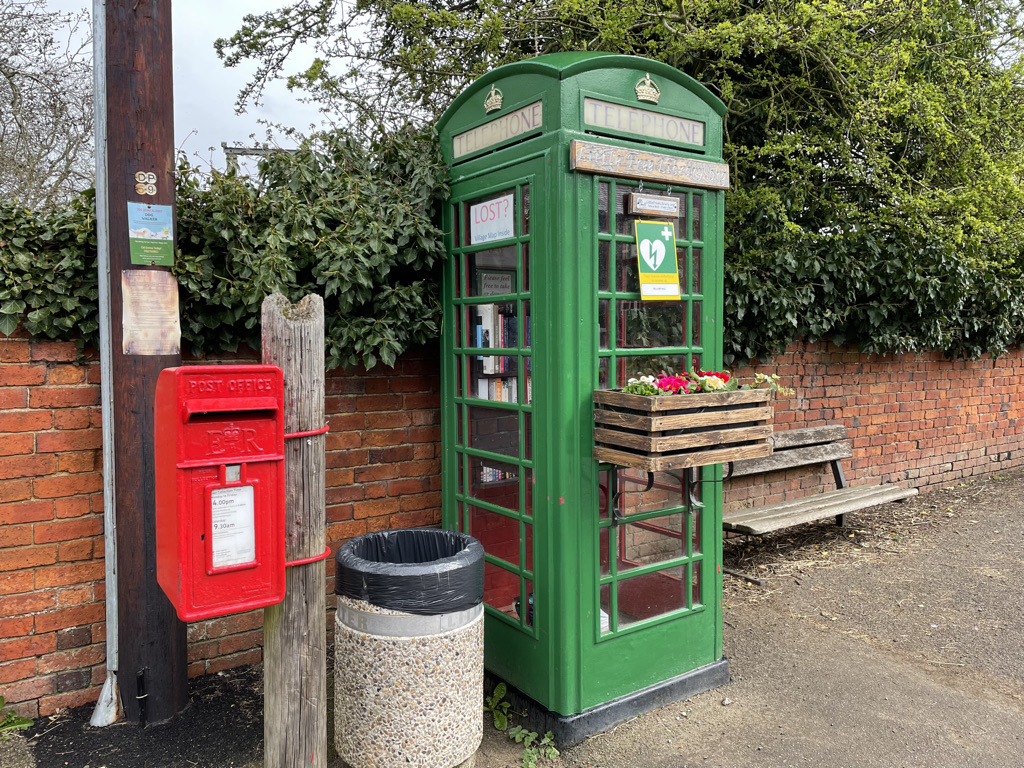
The path then took us across beautiful undulating pasture with small fields bordered by species-rich hedgerows. Our third new tick for the day and Round came while we stood listening to the repertoires of Blackcap, Chiffchaff, Bullfinch, Chaffinch, Yellowhammer, Nuthatch and Linnet. Our first Willow Warbler!
Advancing a couple of paces to observe a Buzzard perched in a tree, we immediately glimpsed the unmistakable orangey-red flash of a male Redstart in pristine plumage flitting along the hedgerow nearest to us. New tick number four! We were quite elated by now, celebrating the change in wind direction which had indeed resulted in a significant fall of spring migrants. A good half an hour was spent at this location, watching the Redstart cross to another hedgerow and systematically making its way along, calling and darting to and from the damp pasture, feeding on the plentiful insects as it went. Surveying this rural scene, with small ponds and streamlets running along the base of the hedgerows, it was perhaps unsurprising to discover that this was prime habitat for Redstart, yet this remains a very under-watched part of the County.
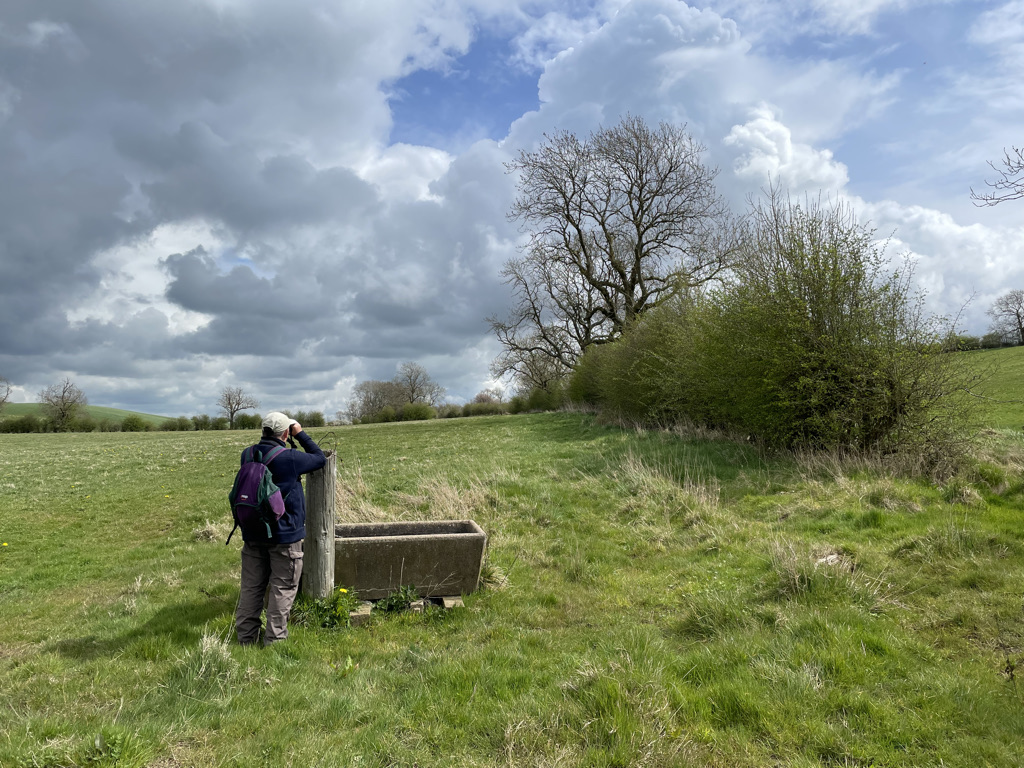
Climbing again, we reached the top of Smeeton Gorse Hill, with the wonderfully scrubby Smeeton Gorse to our left. A strategically placed seat here provided the perfect lunch stop, from where we had a panoramic view across the Gorse to Saddington Reservoir. Several Small Tortoishell and Peacock butterflies danced through the grasses, making the most of a brief interlude of sunshine before the next batch of April showers marched rapidly across the landscape. As we took our refreshments, the familiar song of our first displaying Whitethroat in the hedge in front of us provided our 5th new bird of the Round.
With more storm clouds accumulating, we made our move, taking a last appreciative look back at the seat we had just occupied dedicated to Mary Hodgkin, 1925 – 2004, ‘Who loved the Leicestershire Round’. Our descent towards the Reservoir was accompanied by fine views of a Red Kite circling below eye-level over the fields. Although a relatively common sighting on the Round, we never tired of seeing these magnificent birds patrolling the skies.

After a brief drenching, we arrived at Saddington Reservoir to the sound of a yaffling Green Woodpecker and the sight of nine Swallows perched in the highest marginal tree, rain-bathing and preening themselves before resuming their insect forays over the water. In this small area, we found Greylag and Canada Goose, Mallard, Coot, Moorhen, Great Crested Grebe, ten Cormorants hanging their wings out to dry on the bank and two Magpies bathing at the water’s edge. Reed Bunting, Blackcap, Chiffchaff, the first Long-tailed Tit of the day and Wren were also observed. Then a large flock of some 300+ Herring Gulls flew past and a female Sparrowhawk shot through in pursuit of yet another Red Kite.
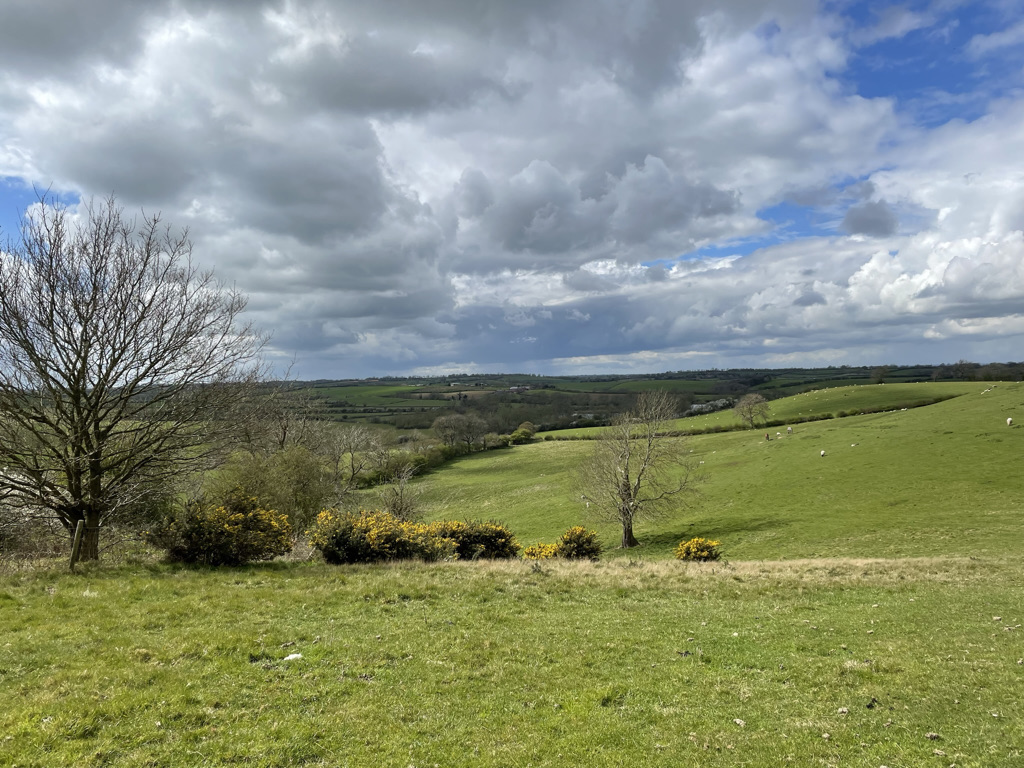
We pressed on to Saddington Village, passing evidence of mammals on the way in the form of Otter Spraint, Fox Scat, a Badger latrine, numerous molehills and several Rabbits. At least four Song Thrushes were singing, together with the ubiquitous House Sparrow and Jackdaw, some pairs of which were building their nests in the local chimney pots! Great Spotted Woodpecker, Dunnock and Coal Tit were also noted here.
Leaving the village, the track took us through a farmyard where a friendly Ram allowed us to get close enough for a quick scratch behind his ears before we emerged to cross the Saddington-Fleckney Road. An unusually tussocky ridge and furrow field, containing more sheep seemed an excellent habitat for Barn Owl, but alas, dusk was still a few hours away, as were we from our destination.
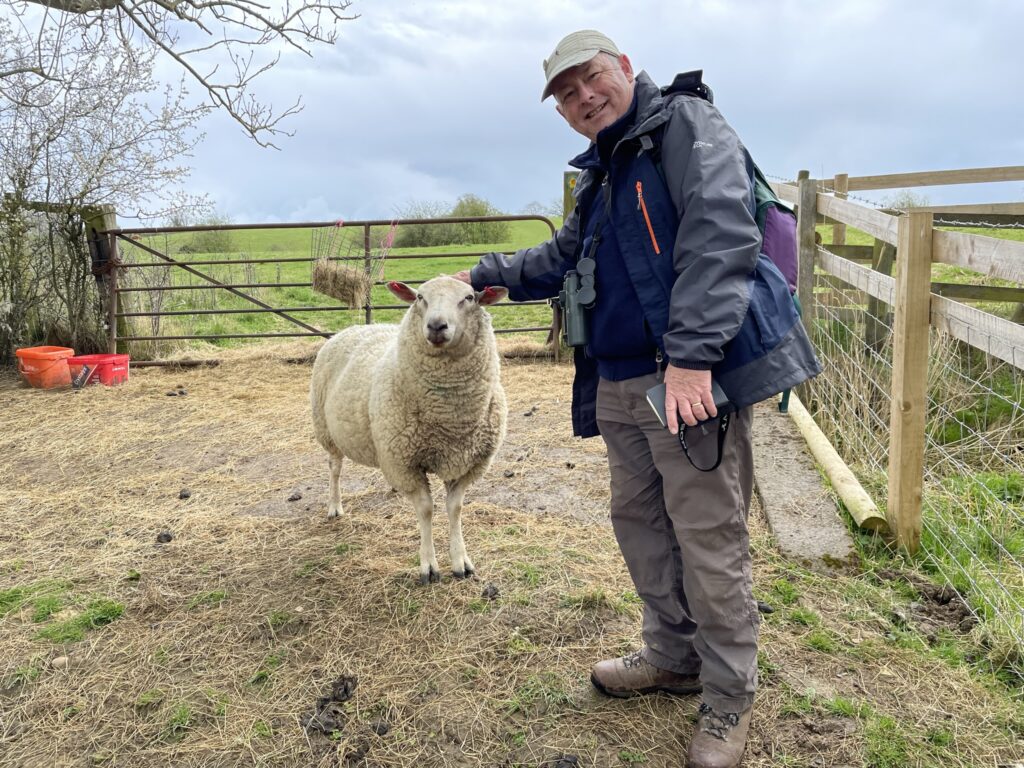
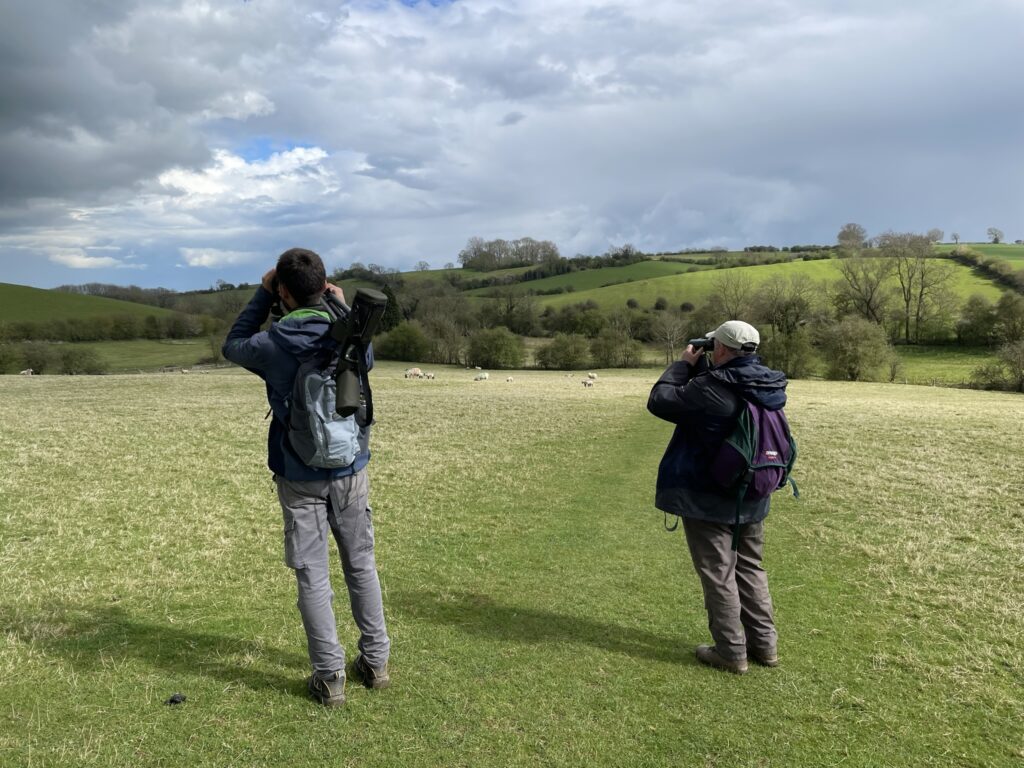
The path to Shearsby looked fairly straightforward on the map, but arriving at the outskirts of Fleckney, it soon became apparent that our progress was to be halted due to the construction of a vast new housing estate. LCC notices explained that the footpaths in this area were closed on ‘Health and Safety’ grounds to enable the builders to go about their work unhindered. As no detours were offered, we had little choice but to conduct the next stretch of the Round on the main road through Fleckney and rejoin the path further on, entailing an additional couple of miles. Birds were still recorded on our way through, the most numerous being Greenfinch, House Sparrow, Collared Dove, Robin, Blue Tit, Starling, Blackbird and Woodpigeon. Exiting Fleckney via Arnesby Road, we picked up Bullfinch, Yellowhammer, Linnet and Blackcap, before pausing at Glebe Farm to discover a Little Owl flying into a nearby tree, perfectly camouflaged against the bark.
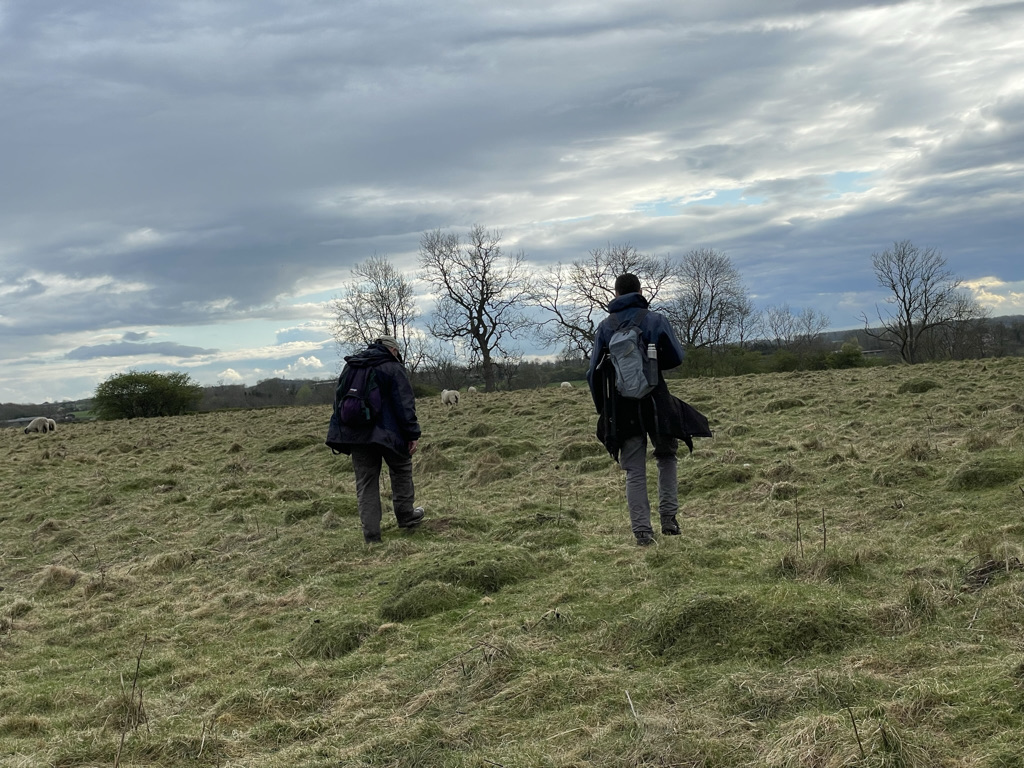
A linear route across the fields eventually brought us to Shearsby, with its extensive village green and roadsides brightly adorned with daffodils. Singing Robin, Blackbird, House Sparrow, Chaffinch, Wren and Blue Tit were seemingly everywhere as we wound our way through the village.
Resuming our route across the fields again towards Bruntingthorpe, the showers eventually subsided and we could finally relax for the last part of the route. Passing a large Badger sett and noting eight Rabbits and a Hare along the way, a large flock of 150 alarmed Linnet suddenly came into view, pursued by a male Sparrowhawk. A well-marked path across the final few fields took us through extensive crops of flowering Rape, before an evening chorus of Song Thrush and Woodpigeon marked our arrival at Bruntingthorpe.
Welcoming staff and a delicious meal at the Joiners Arms rounded off a truly wonderful day, before returning home, celebrating the addition of five new bird species to our total for the Round to date.
